digital fundamentals
chapter 1 digital concepts
digital and analog quantities
an analog quantity is one having continuous values. a digital digital quantity is one having a discrete set of values.
binary digits
positive logic: HIGH=1;LOW=0;
negative logic: HIGH=0;LOW=1;
logic levels
in a practical digital circuit, however, a high can be any voltage level between a specified minimum value and a specified maximum value.likewise, a low can be any voltage level between a specified minimum value and a specified maximum value.
no overlap(重叠)
digital waveforms
positive-going pulse: rising edge(leading edge), falling edge(trailing edge)
negative-going pulse:rising edge(trailing edge), falling edge(leading edge)
rise time [fall time]: 10% of the pulse amplitude (height from baseline) to 90%
pulse width: between 50% points
duty cycle(占空比)=pulse width/ the period (T).
chapter 2 number system, operations, and codes
decimal numbers
binary numbers: the weight
binary-to-decimal conversion
decimal-to-binary conversion:
sum- of- weights method----9=8+1=2^3+1
repeated division- by- 2 method----短除法逆序
12/2=6......0
6/2=3......0
3/2=1......1
1/2=0......1
12=1100(B)
converting decimal fraction to binary
0.3125x2=0.625……0
0.625x2= 1.25……1
0.25 x2= 0.50……0
0.50 x2= 1.00……1
(个位)0.3125=.0101(B)
1’s and 2’s complements of binary numbers
finding the 1’s complement: 10110010---->01001101
finding the 2’s complement:
2’s complement=(1’s complement)+1: 10110010---->01001101+1=01001110
signed numbers
a 0 sign bit indicates a positive number, and a 1 sign bit indicates a negative number.
the decimal value of signed numbers
2’s complement
-2^7 2^6 2^5 2^4 2^3 2^2 2^1 2^0
1 0 1 0 1 0 1 0
=-128+32+8+2=-86
10101010---->11010101+1=11010110=-(64+16+4+2)=-86
range of signed integer numbers that can be represented
range=-(2^(n-1))to (2^(n-1)-1)
floating – point numbers
sign
mantissa: represents the magnitude of the number
exponent: represents the number of paces that the decimal point (or binary point ) is to be moved.(指数)
single-precision -->s(1bit)—exponent(8 bits)—mantissa(23 bits) [32 bits]
double-precision—>s(1 bit)—exponent(11 bits)—mantissa(52 bits) [64 bits]
there are 24 bits(single precision) in the mantissa because in any binary number the left-most bit is always a 1. therefore , this 1 is understood to be there although it does not occupy an actual bit position.
1011010010001=1.011010010001x 2^12
s=0,e=10001011=139=127+12,mantissa=01101001000100000000000
exponent-127
arithmetic operations with signed numbers
addition
both numbers positive: 00000111+00000100=00001011—>7+4=11
positive number with magnitude larger than negative number:00001111+11111010=1 00001001 (15-6=9)
negative number with magnitude larger than positive number:00010000+11101000=11111000 (16-24=-8)
both numbers negative:11111011=11110111=1 11110010 (-5-9=-14)
overflow condition(only occur when both numbers are positive or negative )
01111101+00111010=10110111 (125+58=183)
subtraction
the sign of a positive or negative number is changed by taking 2’s complement
00000100(+4) 11111100(-4)
multiplication
the partial method is perhaps the more common one because it reflects the way you multiply longhand.
step1—sign
step2—change any negative number to true(uncomplemented) form.
step3—generate the partial products(only the magnitude bits are used in these steps)
step4—add each partial products
step5—if sign that was determined is negative, 2’s complement,if positive ,attach the sign bit to the product.
division
dividend / divisor =quotient
subtract the divisor
hexadecimal numbers
binary code decimal
binary coded decimal(BCD) is a way to express each of the decimal digits with a binary code. there only ten code groups in the BCD system.
the 8421 Code
when we refer to BCD, we always mean the 8421 code unless otherwise stated
1010,1011,1100,1101,1110,1111 are invalid codes
0010 0011+0001 0101=0011 1000=23 + 15= 38
0001 0110+0001 0101=0010 1101=0010 1011+0110(6)=0011 0001=16+15=31
digital codes
the gray code(unweighted)
feature:it exhibits only a single bit change from one code word to the next in sequence.
binary-to- gray code conversion
going form left to right, add each adjacent( 相邻的) pair of binary code bits to get the next gray code bit. discard carries(丢弃进位)
the most significant bit (left-most) in the gray code is the same as the corresponding MSB in the binary number
(符号位相同,与前一位的摩尔和得到格雷码的bit)
1+0+1+1+0 binary
1 1 1 0 1 gray
gray-to-binary conversion
1 1 1 0 1 gray code
1 0 1 1 0 binary code( 差分 )
alphanumeric codes
ASCII
hamming code
data bits : d ; parity bits: p
2^p>= d+p+1
chapter3 logic gates
the inverter:---->x=A’
not circuit performs the operation called inversion or complementation
the and gate---->x=AB
the or gate---->x=A+B
the nand gate---->x=(AB)’
the nor gate---->x=(A+B)’
the exclusive-or gate:x=AB’+A’B 异或
the exclusive-nor gate:x=AB+A’B’ 同或
chapter 4 boolean algebra and logic simplification
laws of boolean algebra
commutative laws:
A+B=B+A
AB=BA
associate laws
A+(B+C)=(A+B)+C
A(BC)=(AB)C
distributive law
A(B+C)=AB+AC
rules of boolean algebra
A+0=A A+1=1
A .0=0 A .1=A
A+A=A A+A’=1
A .A=A A .A’=0
A’’=A
A+AB=A A+A’B=A+B
(A+B)(A+C)=A+BC
Demorgan’s theorems
(XY)’=X’+Y’
(X+Y)’=X’Y’
standard form of boolean expression
The sum-of-products(SOP) form
AB+ACD
the products-of-sums(POS) form
(A’+B)(A+B’+C)
converting standard SOP to standard POS
step1—>evaluate each product term in the SOP expression. That is , determine the binary numbers that represent the product terms.
step2—>determine all of the binary numbers not included in the evaluation in step1
step3—>write the equivalent sum term for each binary number from step2 and express in POS form
AB’+A’B---->[10] [01]
(A+B)(A’+B’)---->[00] [11]
SOP[A---->1]
POS[A---->0]
also KARNAUGH map and truth tables
the KARNAUGH map(卡诺图)
the Quine-McClusky method
00 01 11 10
cell adjacency(相邻)
mapping a standard SOP expression
A’B’C’---->000---->1
mapping a standard POS expression
(A+B+C)---->000---->0
simplification
1.a group must contain either 1,2,4,8, or 16 cells,which are all powers of two.
2.each cell in group must be adjacent to one or more cells in that same group . but all cells in the group do not have to be adjacent to each other.
3.always include the largest possible number of 1s in a group in accordance with rule 1.
seven segment display
chapter 5 combinational logic analysis
basic combinational logic circuits
and-or logic
and-or-invert logic
exclusive-or logic(异或)
exclusive-nor logic
chapter 6 functions of combinational logic
basic adders
the half-adder
the half-adder accepts two binary digits on its inputs and produces two binary digits on its outputs, a sum bit and a carry bit.
sum=AB’+A’B
C_out=AB
the full-adder
the full-adder accepts two input bits and an carry and generates a sum output and an output carry.
port: A,B,C_in in std_logic
sum,C_out out std_logic
chapter 10 memory and storage
the address depends on how the memory is organized into units of data
basic memory operations
read/write
RAM
SRAM
tristate buffer 三态门
cycle
DRAM
ROM
PROM
fusible links
flash
memory expansion
FIFO



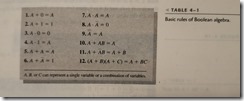
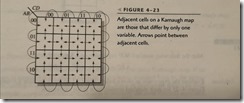



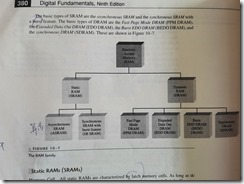
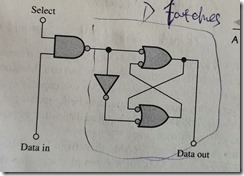
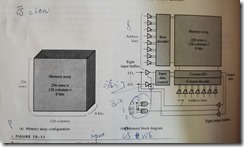

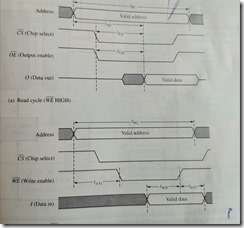
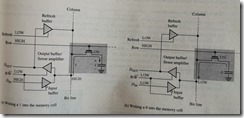
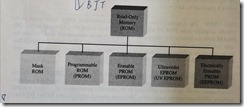
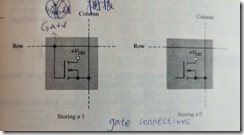
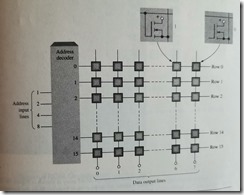
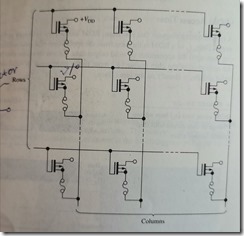
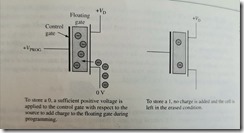
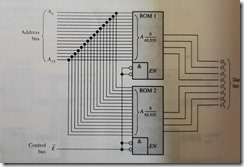
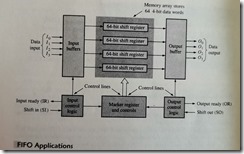

 浙公网安备 33010602011771号
浙公网安备 33010602011771号